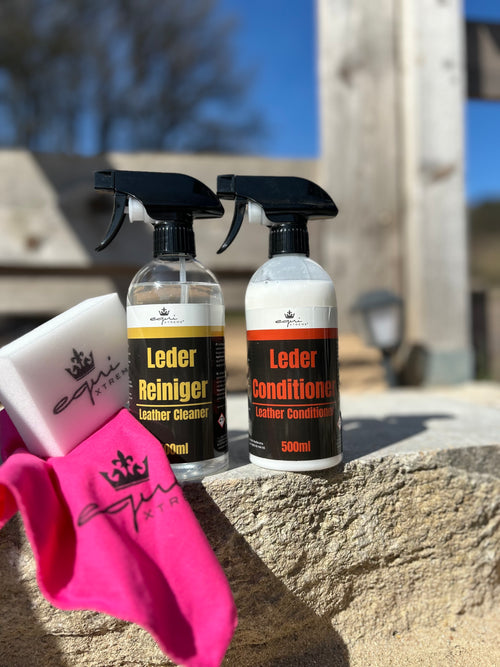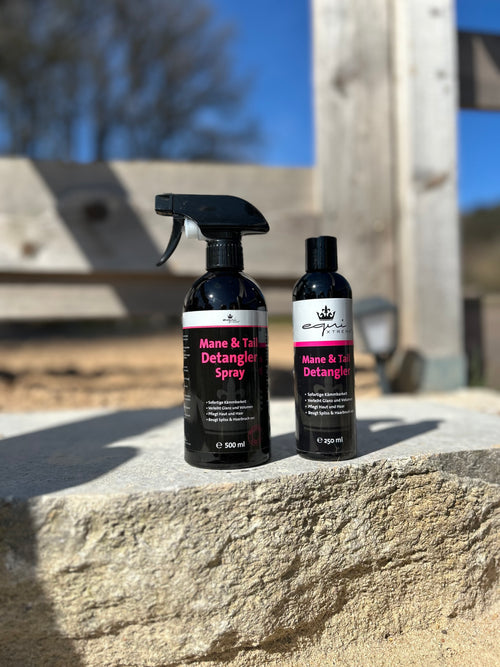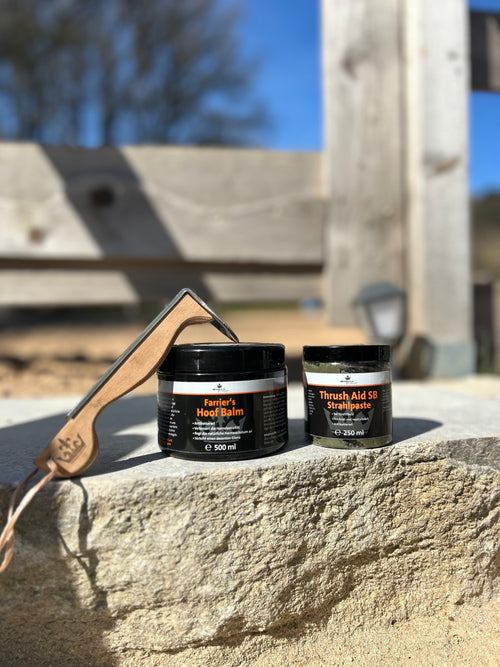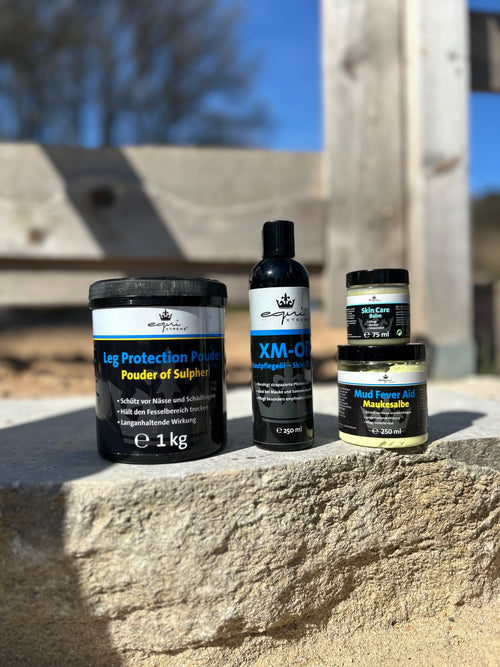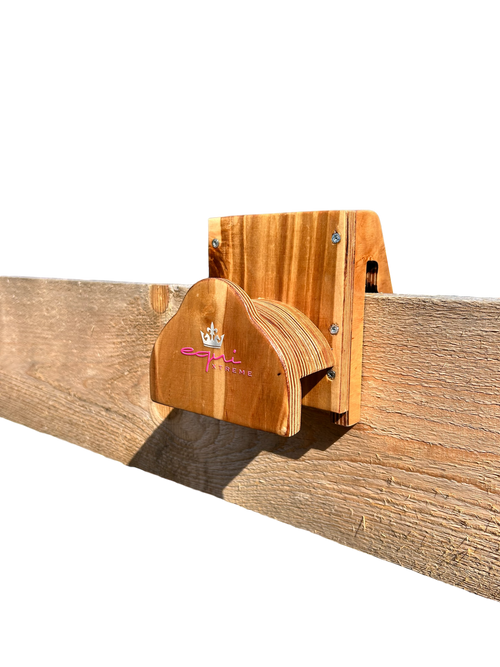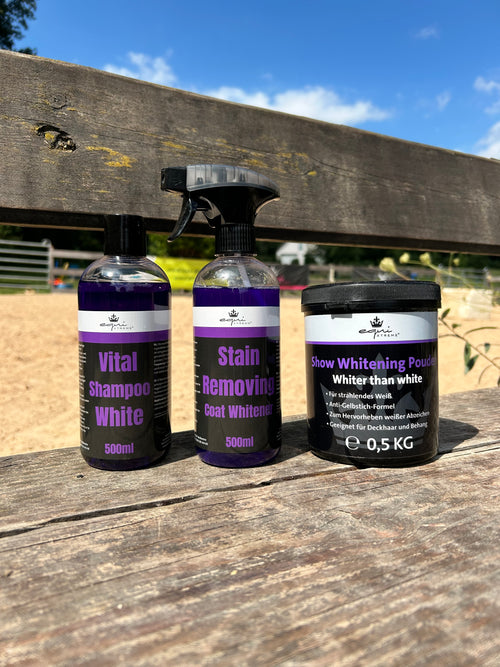
Mud fever - treatment and prophylaxis
Share
Mud, crusts, mud fever? How to properly protect the pastern
Few issues in horse care are as widespread and yet as persistent as mud fever. This inflammatory skin lesion in the pastern area can occur in horses of all breeds – but it is particularly common in horses with a lot of hair. To prevent a minor irritation from developing into a long-term problem, a targeted care routine is essential.
In this blog post, you'll learn everything you need to know about mud fever: from its causes and symptoms to the right treatment – including product recommendations for effective and horse-friendly care.
What exactly is mud fever?
Mud fever is not a single disease, but rather a collective term for inflammatory skin changes in the fetlock . The skin becomes cracked, crusts, weeping patches, or even open wounds develop. Mud fever is not only unpleasant for your horse, but in the worst case scenario, can also lead to lameness – making early treatment all the more important.
Typical triggers for mud fever:
How to recognize mud fever early:
Symptoms often develop gradually. This makes it all the more important to regularly examine the fetlock joint. Look for:
Effective mud fever treatment – this is how it's done
1. Clean thoroughly but gently
Harsh soaps or excessive washing can further irritate the skin. For cleansing, we recommend using equiXTREME Skin Care Soap in combination with the included sponge . It cleanses thoroughly, yet is particularly gentle and pH-neutral —perfect for irritated skin.
Tip: Only clean when absolutely necessary – and always dry thoroughly afterwards!
2. Care and protection with mud fever ointment
After cleansing, apply an anti-inflammatory care product. The mud Fever Aid Mud fever ointment has an antibacterial effect, soothes irritated skin, and simultaneously protects against new germs – without sealing the skin. It is ideal for use in humid, open-air stables and adheres well, even in wet conditions.
3. Additional protection with Leg Protection Powder
To protect sensitive skin from further stress, the Leg Protection Powder . It acts as a breathable protective shield and reliably keeps moisture, dirt, and germs at bay. A valuable addition to your daily care routine, especially during humid seasons.
Preventing mud fever – what you can do
Regular preventative measures often save you from lengthy treatments. These tips will help you prevent mud fever from developing in the first place:
Pasterns: Curse or blessing in case of mud fever?
Horses with lush mane – like Shire Horse , Irish Cob and Tinker horses are particularly susceptible. Their dense pastern hair traps moisture and dirt, which can pose a real hygiene problem.
Heavily soiled or tangled hair can promote mud fever – in such cases, trimming or completely removing it is certainly advisable. If you don't want to sacrifice the beauty, you need to counteract this with consistent grooming. Regular detangling, cleaning, and thorough drying are essential.
Conclusion: Keep mud fever under control – with the right care and routine
Mud fever requires consistency. Recognizing symptoms early, using the right care products, and consistently maintaining dry, clean skin will help you get the inflammation under control.
With the Mud Fever Aid With the mud ointment , the leg protection powder and the skin care soap you are perfectly equipped – for gentle but effective care of your horse.
By the way: Many of the products recommended here are also included in our practical equiXTREME stable pharmacy – ideal for comprehensive care for mud fever, sweet itch, etc.

